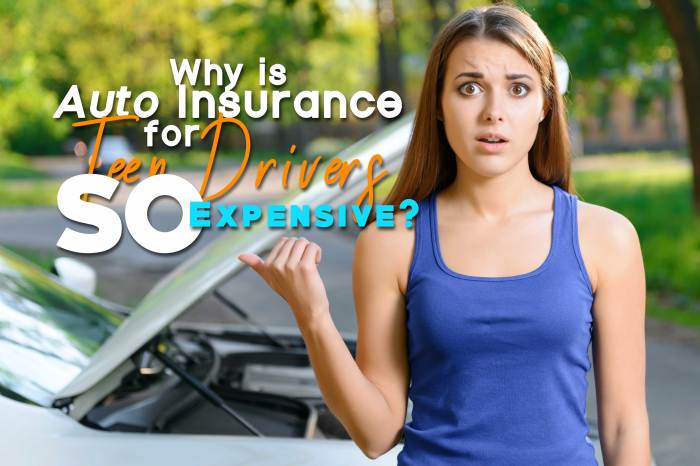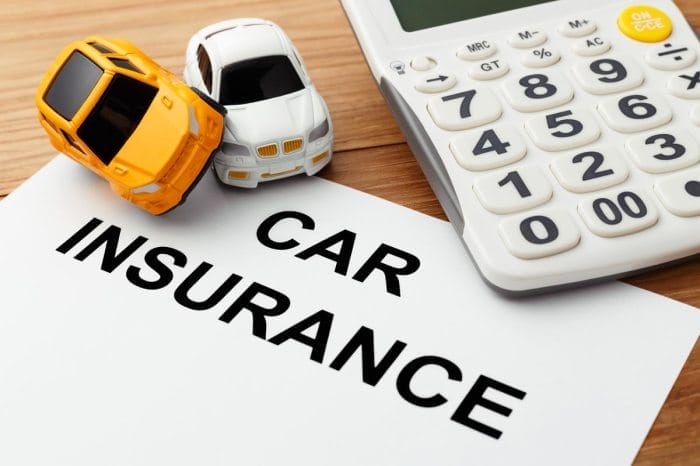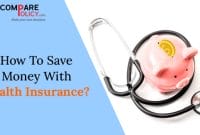Navigating the realm of auto insurance can be particularly challenging when it comes to insuring teen drivers. Their inexperience and higher risk profile often result in substantial premiums. However, by adopting a strategic approach, parents and guardians can secure competitive quotes and ensure adequate coverage for their young drivers.
This comprehensive guide delves into the intricacies of obtaining auto insurance quotes for teen drivers. From researching providers and gathering essential information to understanding coverage options and discounts, we’ll equip you with the knowledge and tools necessary to make informed decisions.
Let’s embark on this journey to ensure your teen driver is protected on the road.
Benefits of Getting Quotes for Teen Drivers

Obtaining multiple auto insurance quotes is a prudent strategy when insuring a teenage driver. It enables parents and guardians to make informed decisions, potentially securing significant savings and optimizing coverage for their young drivers.
Potential Savings and Discounts
Shopping around for quotes can reveal substantial differences in premiums among insurance providers. Some companies offer specialized discounts for teen drivers, such as:
- Good Student Discount: Many insurers offer discounts to teen drivers who maintain good academic standing.
- Driver’s Education Discount: Completing a state-approved driver’s education course can also qualify teen drivers for discounts.
- Multi-Car Discount: If the family has multiple vehicles insured with the same company, they may be eligible for a multi-car discount.
Comparing Coverage Options and Premiums
Comparing quotes from different providers allows parents to assess the coverage options and premiums offered. Some key factors to consider include:
- Liability Coverage: This coverage protects the policyholder against financial responsibility for injuries or property damage caused to others.
- Collision Coverage: This coverage covers damage to the insured vehicle in the event of a collision.
- Comprehensive Coverage: This coverage protects the insured vehicle against non-collision-related damages, such as theft, vandalism, or natural disasters.
- Medical Payments Coverage: This coverage helps pay for medical expenses for the insured driver and passengers in the event of an accident.
- Uninsured/Underinsured Motorist Coverage: This coverage protects the insured driver and passengers in the event of an accident caused by an uninsured or underinsured motorist.
Researching Insurance Providers

Selecting the right auto insurance provider for your teen driver is crucial. Explore reputable companies and those specializing in insuring teen drivers. Consider customer reviews and ratings to make an informed decision.
Evaluating Auto Insurance Companies
To assess auto insurance companies effectively, consider the following factors:
- Financial Stability: Choose companies with a strong financial standing to ensure they can fulfill claims obligations.
- Customer Service: Look for insurers with a reputation for excellent customer service, prompt claims processing, and helpful support.
- Coverage Options: Compare the coverage options offered by different providers to ensure they align with your teen’s needs.
- Discounts and Rates: Research companies that offer discounts for teen drivers, such as good student discounts or multi-car discounts, to save on premiums.
- Claims Handling: Read reviews and ratings to understand how efficiently and fairly the insurance company handles claims.
Finding Providers Specializing in Teen Drivers
Consider these tips to find auto insurance providers that specialize in insuring teen drivers:
- Online Research: Use search engines and insurance comparison websites to find companies that cater to teen drivers.
- Insurance Brokers: Consult with an insurance broker who can provide personalized recommendations based on your teen’s profile and needs.
- Word-of-Mouth: Ask friends, family, or neighbors for recommendations on insurers that offer favorable rates and coverage for teen drivers.
Importance of Customer Reviews and Ratings
Customer reviews and ratings play a significant role in selecting an auto insurance provider. Consider the following:
- Online Reviews: Read reviews on reputable platforms like the Better Business Bureau (BBB) or consumer review websites to understand the experiences of other policyholders.
- Claims Satisfaction: Look for companies with high customer satisfaction ratings for claims handling, as this reflects their efficiency and fairness in resolving claims.
- Social Media: Check the social media pages of insurance providers to see how they interact with customers and address concerns.
Gathering Information for Quotes

To obtain accurate auto insurance quotes for teen drivers, it is essential to gather accurate and comprehensive information. This information helps insurance providers assess the risk associated with insuring the teen driver and determine the appropriate premium. Providing accurate information is crucial as it ensures a fair and accurate quote, avoiding any discrepancies or surprises during the policy purchase or claim process.
Essential Information Required
The following information is typically required to obtain auto insurance quotes for teen drivers:
- Teen driver’s personal information: This includes the teen’s name, date of birth, driver’s license number, and driving history (if applicable).
- Vehicle information: This includes the make, model, year, and vehicle identification number (VIN) of the vehicle the teen driver will be operating.
- Policy details: This includes the desired coverage limits, deductibles, and any additional coverage options (such as roadside assistance or rental car reimbursement) the policyholder is interested in.
- Household information: This includes the names, ages, and driving records of other household members who will be driving the insured vehicle.
Purpose and Importance of Accurate Information
Providing accurate information during the quoting process is essential for several reasons:
- Accurate risk assessment: Insurance providers use the information provided to assess the risk associated with insuring the teen driver. This helps them determine the appropriate premium that reflects the level of risk.
- Fair and competitive quotes: Providing accurate information ensures that the quotes received are fair and competitive, based on the actual risk profile of the teen driver and the vehicle being insured.
- Avoid discrepancies and surprises: Providing accurate information during the quoting process helps avoid discrepancies or surprises during the policy purchase or claim process. This ensures a smooth and hassle-free experience for the policyholder.
Impact of Factors on Quotes
Several factors can impact the auto insurance quotes for teen drivers, including:
- Teen driver’s age: Younger teen drivers typically have less driving experience and are considered higher risk, resulting in higher insurance premiums.
- Driving record: A teen driver with a clean driving record will generally receive lower insurance premiums compared to a teen driver with traffic violations or accidents.
- Vehicle type: The type of vehicle the teen driver will be operating can also impact the insurance premium. Sports cars and high-performance vehicles are typically more expensive to insure than sedans or minivans.
Online Quoting Tools

Navigating the online quoting tools provided by insurance companies can simplify the process of obtaining auto insurance quotes for teen drivers. These tools are designed to gather essential information and generate personalized quotes tailored to your unique circumstances.
To effectively utilize online quoting tools, follow these steps:
Navigating Online Quote Forms
- Locate the insurance company’s website and navigate to the “Get a Quote” or “Auto Insurance” section.
- Select the option for “Teen Driver” or “Young Driver” insurance.
- Enter basic personal information, including your name, address, date of birth, and contact information.
- Provide details about your teen driver, such as their age, driving experience, and any traffic violations or accidents.
- Enter information about the vehicle to be insured, including the make, model, year, and vehicle identification number (VIN).
- Select the coverage options you desire, such as liability, collision, comprehensive, and any additional coverages you deem necessary.
- Review the quote carefully and compare it with quotes from other providers before making a decision.
Comparing Quotes from Multiple Providers
- Utilize online quote comparison tools that allow you to enter your information once and receive quotes from multiple insurance companies.
- Compare quotes side-by-side, paying attention to the coverage limits, deductibles, and premium amounts.
- Consider the reputation and financial stability of each insurance company before making a decision.
- Contact insurance companies directly to inquire about any discounts or promotions they may offer for teen drivers.
Working with Insurance Agents

Insurance agents play a pivotal role in providing personalized auto insurance quotes for teen drivers. They serve as knowledgeable advisors, guiding you through the complexities of coverage options, discounts, and policy details. Consulting with an agent offers numerous benefits, including:
- Personalized Quotes: Agents assess your unique situation, including your teen’s driving history, vehicle type, and location, to provide tailored quotes that reflect your specific needs and risks.
- Understanding Coverage Options: Agents explain the different coverage options available, helping you make informed decisions about the level of protection you need.
- Discounts and Savings: Agents can identify applicable discounts, such as good student discounts, multi-policy discounts, and safe driver discounts, to help you save money on your premium.
- Claims Assistance: In the event of an accident, agents provide guidance and support throughout the claims process, ensuring a smooth and hassle-free experience.
Finding and Selecting an Insurance Agent
Choosing the right insurance agent is crucial to obtaining the best coverage at a competitive price. Here are some tips for finding and selecting a knowledgeable and reliable agent:
- Referrals: Ask friends, family, or colleagues for recommendations. Personal referrals can provide valuable insights into the agent’s reputation and service quality.
- Online Research: Research potential agents online, reading reviews and ratings from past clients. Look for agents with a strong track record of customer satisfaction.
- Interview Agents: Contact multiple agents and ask questions about their experience, expertise, and the services they offer. Compare their responses to find an agent who aligns with your needs and expectations.
- Consider Experience and Credentials: Choose an agent who has extensive experience in auto insurance, particularly with teen drivers. Look for agents with professional designations, such as Certified Insurance Counselor (CIC) or Chartered Property Casualty Underwriter (CPCU), which demonstrate their knowledge and expertise.
Comparing Coverage Options
When evaluating auto insurance quotes for teen drivers, understanding the various coverage options available is crucial. This section provides an overview of essential coverages and optional add-ons, highlighting their significance in tailoring coverage to suit the teen driver’s needs and budget.
Essential Coverages
- Liability Coverage: Covers damages and injuries caused to others in an accident. Includes bodily injury and property damage liability.
- Collision Coverage: Covers damage to the teen driver’s vehicle in an accident, regardless of fault.
- Comprehensive Coverage: Covers damage to the teen driver’s vehicle from non-collision events, such as theft, vandalism, fire, and natural disasters.
- Medical Payments Coverage: Covers medical expenses for the teen driver and passengers in case of an accident, regardless of fault.
Optional Add-Ons
- Uninsured/Underinsured Motorist Coverage: Protects the teen driver if involved in an accident with an uninsured or underinsured driver.
- Rental Reimbursement Coverage: Covers the cost of a rental car if the teen driver’s vehicle is being repaired or replaced due to a covered accident.
- Roadside Assistance Coverage: Provides services such as towing, flat tire changes, and battery jumps in case of a breakdown or accident.
- Gap Coverage: Covers the difference between the actual cash value of the teen driver’s vehicle and the amount owed on the loan if it is totaled in an accident.
Evaluating Premiums
Understanding how auto insurance premiums are determined and comparing them across providers is essential for finding the best coverage at an affordable price. Several factors influence the cost of insurance for teen drivers, including their age, driving history, vehicle type, and location.
Factors Influencing Premiums
- Age and Driving History: Younger drivers, especially those with less experience behind the wheel, are considered higher risk and typically pay higher premiums. A clean driving record with no accidents or violations can help lower rates.
- Vehicle Type: Sports cars, high-performance vehicles, and luxury cars are often associated with higher premiums due to their increased risk of accidents and repairs.
- Location: Insurance rates vary by state and region, influenced by factors such as traffic congestion, crime rates, and the frequency of accidents.
- Coverage Limits and Deductibles: Higher coverage limits and lower deductibles result in higher premiums, as they provide more comprehensive protection.
Comparing Premiums Across Providers
To compare premiums effectively, it’s important to obtain quotes from multiple insurance companies. This allows you to assess the differences in rates and coverage options. Consider the following tips when comparing premiums:
- Compare Similar Coverage Levels: Ensure you’re comparing quotes that offer the same level of coverage and limits to make a fair assessment.
- Consider Discounts: Ask about available discounts, such as good student discounts, multi-car discounts, and loyalty discounts, which can significantly reduce premiums.
- Review the Deductible: Deductibles are the amount you pay out-of-pocket before insurance coverage kicks in. A higher deductible can lower your premium, but it also means you’ll pay more for repairs.
Impact of Deductibles and Discounts on Insurance Costs
Deductibles and discounts play a crucial role in determining the overall cost of insurance. Here’s how they affect premiums:
- Deductibles: Choosing a higher deductible can lower your premium. However, it’s important to select a deductible that you can comfortably afford to pay in case of an accident.
- Discounts: Taking advantage of available discounts can significantly reduce your premiums. Common discounts include good student discounts for teen drivers with good grades, multi-car discounts for insuring multiple vehicles with the same company, and loyalty discounts for staying with the same insurer for a certain period.
Discounts for Teen Drivers

Teen drivers often face higher insurance premiums due to their limited driving experience and increased risk of accidents. However, several discounts are available to help reduce the cost of auto insurance for teen drivers.
Good Student Discount
Many insurance companies offer good student discounts to teen drivers who maintain a certain grade point average (GPA). The requirements and eligibility criteria for this discount vary among insurance providers, but typically, a GPA of 3.0 or higher is required.
Some insurance companies may also offer additional discounts for students who achieve honors or make the dean’s list.
Multi-Car Discount
If you have multiple vehicles insured with the same insurance company, you may be eligible for a multi-car discount. This discount can help reduce the cost of insurance for all of your vehicles, including the one driven by your teen.
Defensive Driving Course Discount
Some insurance companies offer discounts to teen drivers who complete a defensive driving course. These courses teach teens safe driving techniques and strategies to help them avoid accidents. The requirements and eligibility criteria for this discount vary among insurance providers, but typically, teens must complete an approved course within a certain timeframe.
Tips for Maximizing Discounts and Reducing Insurance Costs
- Shop around and compare quotes from multiple insurance companies to find the best rates.
- Ask about all available discounts and make sure you are receiving all the discounts you are eligible for.
- Consider raising your deductible to lower your premium. However, make sure you can afford to pay the deductible if you need to file a claim.
- Consider limiting the number of miles your teen drives. This can help reduce your insurance costs.
Additional Considerations
When selecting an auto insurance policy for a teen driver, it’s essential to look beyond the cost and consider other factors that can impact the overall experience and protection. These include customer service, claims handling, and the financial stability of the insurer.
Customer Service
Evaluate the insurer’s reputation for providing excellent customer service. Read online reviews, ask for recommendations from friends or family, and contact the insurer directly to assess their responsiveness and helpfulness. A reliable insurer should offer multiple communication channels, such as phone, email, and online chat, and should have a team of knowledgeable and friendly representatives ready to assist you.
Claims Handling
Research the insurer’s claims handling process and reputation. Consider factors such as the ease of filing a claim, the speed of the claims settlement process, and the overall satisfaction of policyholders with the claims experience. A reputable insurer should have a streamlined claims process, provide clear instructions and support throughout the process, and settle claims promptly and fairly.
Financial Stability
Assess the financial stability and reliability of the insurer. Look for insurers with a strong financial rating from reputable agencies like A.M. Best, Standard & Poor’s, or Moody’s. A financially stable insurer is more likely to be able to pay claims promptly and honor its commitments, providing peace of mind and security.
Finalizing the Policy

After receiving quotes and selecting an insurance provider, the next step is to finalize the auto insurance policy. This involves carefully reviewing the terms and conditions to ensure that they accurately reflect the coverage and limits chosen. It’s important to understand the policy’s provisions and make any necessary changes before signing the contract.
Reviewing the Policy
When reviewing the policy, pay attention to the following key elements:
- Coverage limits: Confirm that the policy provides the desired level of coverage for liability, collision, comprehensive, and other types of coverage selected.
- Deductible amounts: Verify that the deductible amounts chosen are appropriate and align with the budget and risk tolerance.
- Exclusions and limitations: Be aware of any exclusions or limitations that may apply to the coverage, such as certain types of accidents or damages.
- Policy period: Ensure that the policy period aligns with the desired coverage duration and that renewal options are clearly stated.
- Payment terms: Understand the payment options available, including the frequency of payments and any applicable fees or discounts.
Ensuring Accuracy
To ensure that the policy accurately reflects the coverage and limits chosen, consider the following tips:
- Compare the policy with the quote: Cross-check the policy document against the original quote to verify that all the details match.
- Ask questions: If there are any unclear or confusing terms or conditions, don’t hesitate to contact the insurance provider or agent for clarification.
- Review endorsements and riders: If any endorsements or riders have been added to the policy, carefully review them to understand how they modify the coverage.
Keeping the Policy Up-to-Date
It’s important to keep the auto insurance policy up-to-date to ensure that it continues to provide adequate coverage. This includes:
- Reporting changes: Notify the insurance provider promptly about any changes that may affect the policy, such as changes in address, vehicles, or drivers.
- Renewing the policy: Renew the policy on time to avoid any lapse in coverage. Insurance providers typically send renewal notices in advance.
- Reviewing coverage needs: Periodically review the coverage limits and deductibles to ensure that they still meet the changing needs and circumstances.
Last Word

In the realm of auto insurance, securing the most advantageous quotes for teen drivers requires a combination of research, comparison, and understanding of coverage options. By following the strategies Artikeld in this guide, you can navigate the insurance landscape with confidence, ensuring your teen driver is adequately protected while minimizing financial strain.
Remember, auto insurance is not just a legal requirement; it’s an investment in your teen’s safety and your peace of mind.
FAQ Summary
Q: Why is it important to obtain multiple quotes for auto insurance when insuring a teen driver?
A: Comparing quotes from various insurance providers allows you to assess the market and identify the most competitive rates. Different insurers may offer unique discounts or terms that cater specifically to teen drivers, potentially resulting in significant savings.
Q: What are some common discounts available to teen drivers?
A: Many insurance companies offer discounts to teen drivers who maintain good grades, complete defensive driving courses, or participate in telematics programs that monitor driving behavior. Additionally, multi-car discounts may be available if you insure multiple vehicles under the same policy.
Q: What factors influence auto insurance premiums for teen drivers?
A: Premiums for teen drivers are typically higher due to their lack of experience and higher risk profile. Factors that affect premiums include the teen driver’s age, driving record, vehicle type, and location. Additionally, the level of coverage and deductible chosen can also impact the premium amount.
Q: How can I find and select a reputable insurance agent?
A: Look for agents who specialize in insuring teen drivers and have a solid reputation for customer service. Check online reviews and ratings, and ask for recommendations from friends or family members who have had positive experiences with insurance agents.
Q: What should I consider when evaluating auto insurance coverage options for my teen driver?
A: Consider the type of vehicle your teen will be driving, their driving habits, and your budget. Essential coverages include liability, collision, and comprehensive insurance. You may also want to consider optional coverages such as gap insurance, roadside assistance, and rental car reimbursement.



